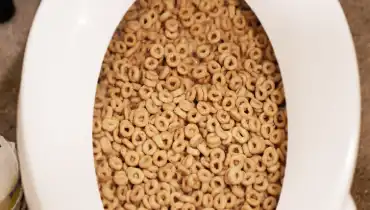Are you looking for facts and techniques concerning Flushing Food Down the Toilet??

Intro
Many individuals are typically confronted with the dilemma of what to do with food waste, particularly when it comes to leftovers or scraps. One typical concern that occurs is whether it's fine to purge food down the toilet. In this short article, we'll explore the reasons that individuals might take into consideration purging food, the consequences of doing so, and alternative techniques for correct disposal.
Reasons that individuals could consider purging food
Absence of awareness
Some people might not know the possible damage brought on by flushing food down the commode. They may incorrectly think that it's a safe method.
Comfort
Flushing food down the toilet may appear like a fast and very easy solution to taking care of unwanted scraps, specifically when there's no nearby trash bin available.
Laziness
In some cases, individuals might just select to flush food out of sheer laziness, without taking into consideration the repercussions of their actions.
Effects of flushing food down the commode
Environmental impact
Food waste that winds up in waterways can add to air pollution and damage aquatic environments. Furthermore, the water made use of to flush food can strain water resources.
Pipes issues
Purging food can lead to clogged up pipes and drains pipes, triggering costly plumbing repairs and troubles.
Sorts of food that ought to not be purged
Coarse foods
Foods with fibrous structures such as celery or corn husks can obtain entangled in pipes and cause obstructions.
Starchy foods
Starchy foods like pasta and rice can absorb water and swell, resulting in obstructions in pipelines.
Oils and fats
Greasy foods like bacon or food preparation oils need to never ever be purged down the commode as they can strengthen and create obstructions.
Appropriate disposal techniques for food waste
Utilizing a garbage disposal
For homes geared up with garbage disposals, food scraps can be ground up and flushed through the pipes system. Nonetheless, not all foods appropriate for disposal in this way.
Recycling
Certain food packaging materials can be reused, minimizing waste and reducing environmental influence.
Composting
Composting is a green way to throw away food waste. Organic products can be composted and utilized to enrich dirt for gardening.
The value of correct waste management
Minimizing ecological damage
Correct waste monitoring techniques, such as composting and recycling, aid decrease air pollution and maintain natural resources for future generations.
Safeguarding plumbing systems
By staying clear of the method of flushing food down the commode, house owners can avoid pricey plumbing fixings and preserve the honesty of their plumbing systems.
Final thought
In conclusion, while it may be alluring to flush food down the commode for convenience, it is necessary to understand the prospective repercussions of this activity. By embracing appropriate waste monitoring techniques and throwing away food waste sensibly, people can add to much healthier plumbing systems and a cleaner atmosphere for all.
FLUSH FOOD DOWN THE TOILET?
FLUSHING FOOD CAN CAUSE BLOCKED DRAINS IN YOUR HOME
All of the plumbing fixtures in your home are connected to the same sewer pipe outside of your home. This outdoor sewer pipe is responsible for transporting all the wastewater from your home to the Council sewer mains. Even small pieces of food that go down the kitchen sink can cause problems for your sewer. It should therefore be obvious that flushing larger bits of food, such as meat, risks a clog in either the toilet itself or the sewer pipes. Flushing greasy food is even more problematic because oil coagulates when it cools, coating the interior lining of your pipes.
THE TOILET IS NOT A BIN
Food isn’t the only thing that people shouldn’t be flushing down the toilet. People use the toilet to dispose of all kinds of things such as tampons, makeup wipes, dental floss, kitty litter and even underwear. Water goes to great lengths to educate residents about the high costs and stress placed on wastewater treatment systems simply from people flushing the wrong stuff down the toilet. It costs taxpayers millions of dollars each year, and homeowners thousands in blocked drain repairs.
FLUSHING FOOD IS A WASTE OF WATER
Flushing food is a waste of our most precious resource - water. In June this year Level 1 water restrictions were introduced to protect water supply from drought conditions. Much of New South Wales continues to be affected by prolonged drought with recent figures revealing up to 97 per cent of the state remains in drought. Depending on whether you have a single or dual flush toilet, every single flush uses between five and 11 litres of water. In the current climate this is a huge amount of water to be wasting on flushing food that should be placed in the bin (or better yet, the compost).
https://www.jabplumbingsolutions.com.au/blog/can-you-flush-food-down-the-toilet

Do you appreciate reading up on Think Twice Before Flushing Food Down Your Toilet? Place a comment down below. We will be glad to find out your feelings about this post. We are looking forward that you come back again soon. I beg you pause to promote this blog posting if you liked it. Many thanks for taking the time to read it.
View